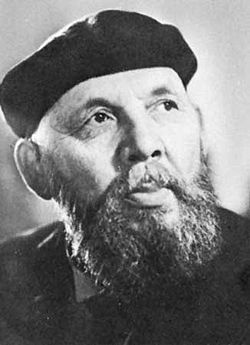Top Qs
Timeline
Chat
Perspective
1939 Nobel Prize in Literature
Award From Wikipedia, the free encyclopedia
Remove ads
The 1939 Nobel Prize in Literature was awarded to the Finnish writer Frans Eemil Sillanpää (1888–1964) "for his deep understanding of his country’s peasantry and the exquisite art with which he has portrayed their way of life and their relationship with Nature."[1] He is the first and the only Finnish recipient of the prize.[2]
Remove ads
Laureate
Sillanpää made his literary debut with short stories published in newspaper Uusi Suomi in Helsinki. His first novel, Elämä ja aurinko ("Life and Sun", 1916), garnered recognition for its audacious portrayal of adolescent love while also employing a Darwinian method of character observation. His artistic works frequently referenced people as elemental entities. The novel Hurskas kurjuus ("Meek Heritage", 1919), depicts the crofter Juha Toivola's life and terrible end, and the revolt of the Finns during their civil war is explained. Sillanpää authored 10 collections of short stories in addition to seven novels, among them Nuorena nukkunut ("The Maid Silja", 1931) and Ihmiset suviyössä ("People in the Summer Night", 1934).[2][3]
Remove ads
Deliberations
Summarize
Perspective
Nominations
Sillanpää was nominated in 39 occasions since 1930. He received the highest number of nominations in 1938 with six nominations from literary critics and academics. In 1939, he received three nominations from a number of professors and members of Åbo Akademi University, University of Helsinki, and Finnish Academy of Science and Letters.[4]
In total, the Nobel Committee of the Swedish Academy received 45 nominations. Ten of the nominees were newly elected such as Flávio de Carvalho, Herbert Samuel, Ethel Florence Richardson, Hugh Walpole, Johan Huizinga, Henriette Roland Holst, Maria Dąbrowska, and Hu Shih. The highest number of nominations was for the Danish author Johannes Vilhelm Jensen, who was awarded in 1944, with four nominations. Seven of the nominees were women namely Maria Dąbrowska, Maila Talvio, Henriette Charasson, Sally Salminen, Henriette Roland Holst, Ethel Florence Richardson, and Maria Madalena de Martel Patrício.[5]
The authors Pedro Nolasco Cruz Vergara, Ethel M. Dell, Havelock Ellis, Ford Madox Ford, Ludwig Fulda, Agnes Giberne, Zane Grey, Richard Halliburton, Sidney Howard, Kyōka Izumi, Okamoto Kanoko, Vladislav Khodasevich, Volter Kilpi, Antonio Machado, Anton Makarenko, Leonard Merrick, Llewelyn Powys, Amanda McKittrick Ros, Joseph Roth, Edward Sapir, Caton Theodorian, Vũ Trọng Phụng, Amy Catherine Walton, William Drake Westervelt, William Huntington Wright (known as S. S. Van Dine), and Iris Guiver Wilkinson (known as Robin Hyde) died in 1939 without having been nominated for the prize.
Remove ads
Prize decision

The final contenders for the 1939 Nobel Prize in Literature were Sillanpää, Hermann Hesse (awarded in 1946), and the Dutch historian Johan Huizinga. At first Hesse had the strongest support, but conservative members of the Academy opposed a prize to Hesse because they felt his work was "anarchic". It has been speculated that Sillanpää was awarded for political reasons rather than for his literary merits, but documents show that the conflict between Finland and the Soviet Union was not mentioned in the deliberations by the Nobel committee.[6]
Aftermath
A few days after he received the prize, talks between Finland and Soviet Union broke down and the Winter War began.[7][8] Sillanpää donated the golden medal to be melted for funds to aid the war effort.[8]
References
External links
Wikiwand - on
Seamless Wikipedia browsing. On steroids.
Remove ads

